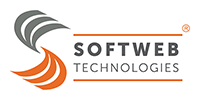Traceability stands as a pivotal element for enhancing processes across diverse manufacturing industries. Originally prominent in sectors with high-quality and liability standards, traceability has evolved to become equally indispensable for improving efficiency, quality, and throughput across all manufacturing domains.
Understanding Traceability
What is Traceability?
Traceability, synonymous with product traceability, refers to the ability to locate and verify the complete history of production parts. It encompasses everything from an employee’s initial scan to start their shift to the product’s arrival in receiving. The ability to track, analyze, and report such data is crucial for agile manufacturing and continuous improvement, providing a comprehensive understanding of the manufacturing process.
Click here to learn more about Traceability services from Softweb
Types of Traceability
Internal Traceability
Internal traceability involves tracking parts through their processes within a single company or plant. It narrates the journey of raw materials entering a plant, transforming into intermediate products, and ultimately becoming final products. This type of traceability includes acceptance records, internal process records, and shipment records, offering a holistic view of the part’s production process.
Supply Chain Traceability
In contrast, supply chain traceability tracks parts as they traverse the entire supply chain. This type of traceability enhances awareness of the complete product process and delivery, significantly improving product quality. Visualizing supply chain traceability, particularly in industries like automotive manufacturing, ensures accountability for parts leaving the factory, minimizing issues during transport and reducing throughput.
The Significance of Traceability in Manufacturing
Traceability provides manufacturers with real-time visibility into their operations, leading to substantial improvements in quality and production efficiency. Here are four ways in which traceability supports continuous improvement and enhances manufacturing efficiency:
-
Traceability Puts Data into Context
Individual data points can be challenging to interpret independently. Traceability allows the compilation of data into reports and dashboards, offering a more comprehensive picture of the manufacturing process. Modern digital platforms and devices, such as MES and PLC systems, record critical traceability data like cycle times, operator IDs, barcode scans, gauge values, serial numbers, and work completion times. Analyzing this data holistically provides insights into the overall production process, highlighting successes and challenges.
-
Traceability Improves Quality
Identifying recurring problems and inefficiencies becomes easier with traceability. Quality control within traceability helps contain defective parts caused by raw material batches, faulty production machines, or design defects. Traceability efforts promote accountability, reminding operators of their responsibility for ensuring correct job performance. Case in point, Luxottica, a leader in eyewear, implemented traceability solutions, resulting in a 19% decrease in defects.
-
Traceability Informs Better Decision Making
Data generated for defect prevention can also identify broader process problems. Fully contextualized data may reveal challenges operators face, leading to unsafe or inefficient practices. Identifying and addressing these issues ensures effective and comfortable work for operators.
-
Traceability Makes Compliance Possible
Certain industries mandate traceability in all processes for regulatory compliance. Knowing a product’s history, the involved processes, and adherence to safety standards are imperative. Even in industries without mandatory traceability regulations, having a fully traceable product enhances trust and reputation.
Embracing a Fully Traceable Future with Face Recognition Technology
Traceability is revolutionizing manufacturing across industries. As the world becomes more interconnected, manufacturers must comprehend every aspect of their processes. The integration of face recognition technology, such as Softweb’s Blueeye & SIM4, unlocks more traceability throughout operations. Manual processes, once challenging to track, now contribute to higher quality, efficiency, and throughput.
In conclusion, traceability is not merely a requirement for compliance; it is a catalyst for continuous improvement and efficiency in the dynamic landscape of manufacturing. Embracing advanced technologies like face recognition ensures that manufacturers stay ahead in the quest for optimal performance and product quality.


